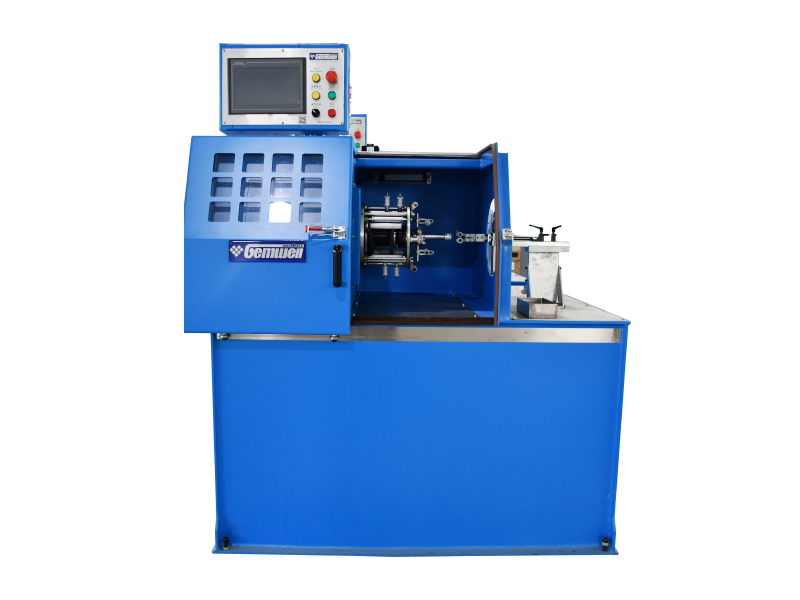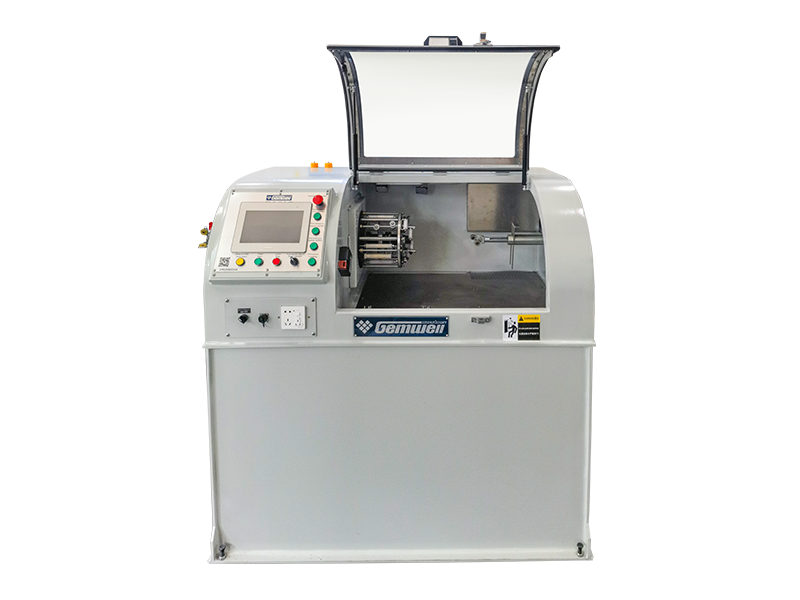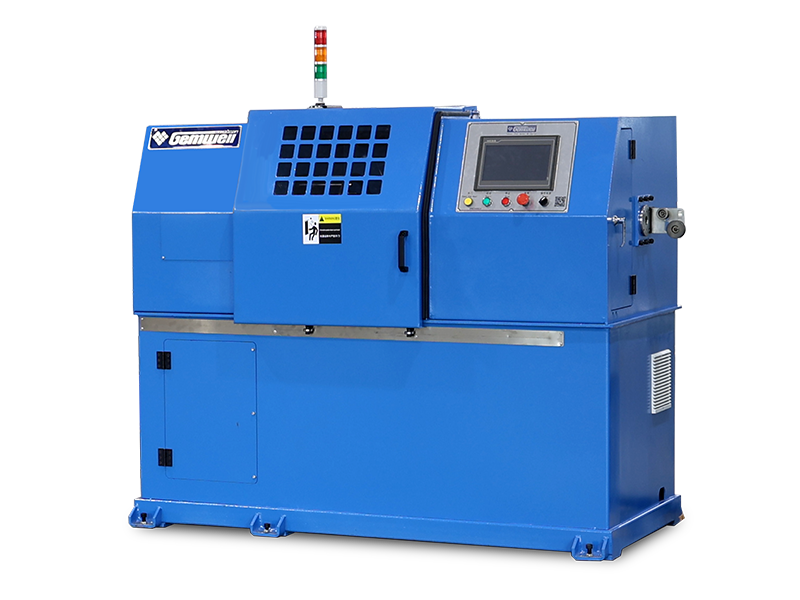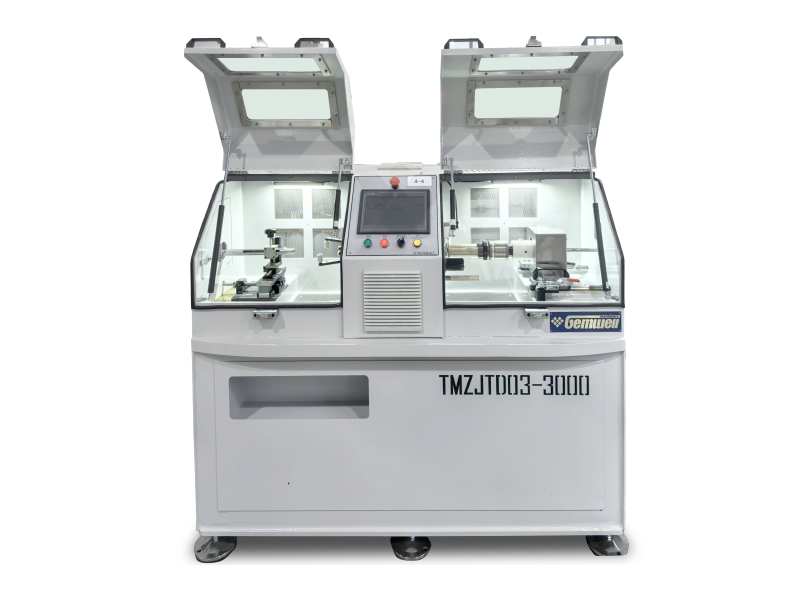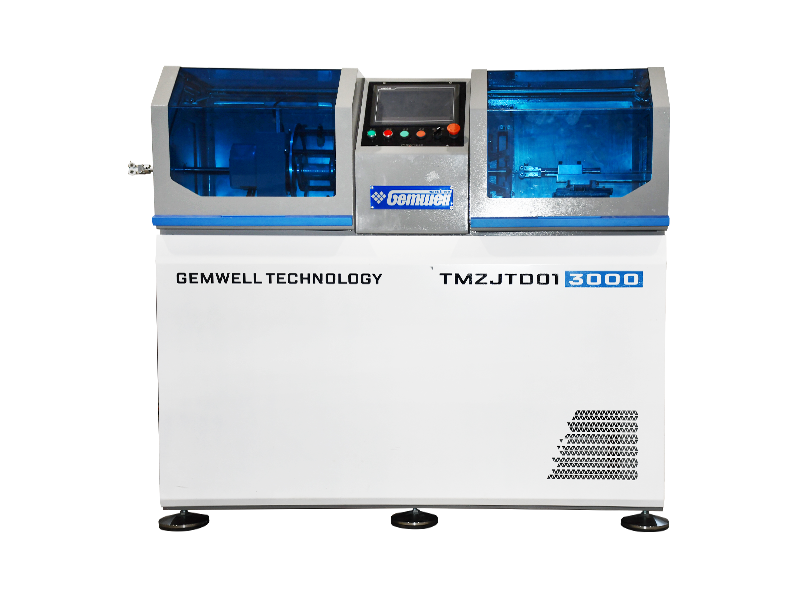Wire Pair Twisting Machine is a specialized industrial equipment used for the production of twisted wire pairs, which are essential components in various electrical and electronic applications. These machines are designed to automate the process of twisting multiple wires together, ensuring consistency, efficiency, and quality in the manufacturing of cables and wires. The following is a comprehensive overview of the key aspects of Wire Pair Twisting Machines, including their functionality, applications, technical specifications, and operational considerations.
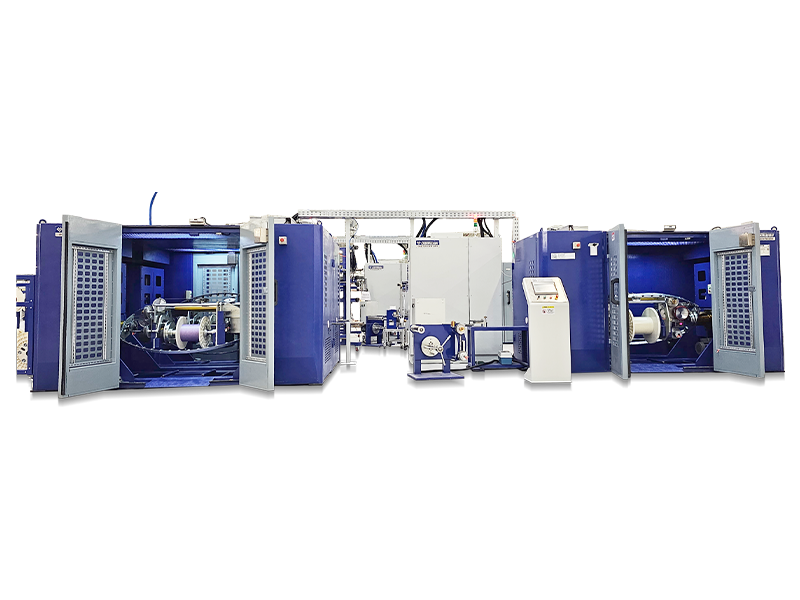
Content
- 1 1. Functionality of Wire Pair Twisting Machine
- 2 2. Applications of Wire Pair Twisting Machine
- 3 3. Components of Wire Pair Twisting Machine
- 4 4. Advantages of Wire Pair Twisting Machine
- 5 5. Technical Specifications and Features of Wire Pair Twisting Machine
- 6 6. How To Use
- 7 7. Precautions for Safe Use of Wire Pair Twisting Machine
- 8 8. Maintenance of Wire Pair Twisting Machine
- 9 General Maintenance Practices for Industrial Equipment
- 10 9. Cleaning Tips of Wire Pair Twisting Machine
- 11 9. Storage Tips of Wire Pair Twisting Machine
- 12 10. Disadvantages of Wire Pair Twisting Machine
- 13 11. Common Faults and Solutions of Wire Pair Twisting Machine
- 14 12. Buying Tips of Wire Pair Twisting Machine
- 15 13. Environmental and Safety Considerations of Wire Pair Twisting Machine
- 16 Environmental Considerations
- 17 Safety Considerations
- 18 Compliance and Standards
- 19 14. Applications and Industries of Wire Pair Twisting Machine
- 20 15. Future Trends and Developments of Wire Pair Twisting Machine
1. Functionality of Wire Pair Twisting Machine
| Functionality | Description |
| Wire Twisting | The machine is designed to twist multiple wires together to form a twisted pair or bundle. This is a core function of the machine. |
| Wire Feeding | The machine can feed multiple wires into the twisting mechanism, allowing for the processing of multiple wires simultaneously. |
| Adjustable Parameters | The machine allows for adjustments in parameters such as wire diameter, lay length, and twisting speed to meet specific production requirements. |
| Automation | Many modern machines are equipped with automation features, such as programmable control systems and touchscreens, to enhance efficiency and ease of operation. |
| Quality Control | Features such as tension control and monitoring systems help ensure consistent quality in the final product. |
| Safety Features | The machine includes safety features such as emergency stops, overload protection, and safety interlocks to ensure operator safety. |
| High Productivity | The machine is designed for high-speed operation, making it suitable for high-volume production environments. |
| Customization | The machine can be customized to meet specific application requirements, such as wire type, processing speed, and output specifications. |
2. Applications of Wire Pair Twisting Machine
| Application | Description |
| Wire Twisting | The machine is used to twist multiple wires together to form a twisted pair or bundle, which is essential in the production of cables and wires. |
| Wire Drawing | The machine can be used in the process of wire drawing, where wires are drawn through a die to reduce their cross-sectional area. |
| Cable Extrusion | The machine is used in the production of cables, where wires are twisted and then extruded with insulation or other materials. |
| Wire Stranding | The machine is used to twist multiple wires together to form a stranded wire, which is used in various electrical and electronic applications. |
| Braidin | The machine can be used in the production of braided wires, which are used in applications such as ropes, cables, and textiles. |
| Cutting and Stripping | The machine can be integrated with cutting and stripping functions to prepare wires for further processing. |
| Coiling | The machine can be used to coil wires into a specific shape or configuration for storage or transportation. |
| Fiber Optic Communication | The machine is used in the production of optical fibers, where multiple optical fibers are twisted together to form the core of optical cables. |
| Metal Wire Processing | The machine is used in the twisting of metal wires such as steel, iron, and copper to produce various metal twisted wire products. |
3. Components of Wire Pair Twisting Machine
| Component | Description |
| Mould base | A component that can be replaced to combine several insulated cores and twist them into a correct round cable. |
| Bag takes the lead | A structure similar to a paper toe cap, used to wrap cloth tape, paper tape, or film tape around the cable core. |
| Tractor | Composed of a large-diameter rotatable wheel and a wire ring, which provides linear movement and controls the stranding pitch. |
| Take-up device | Used to wind the twisted cable onto a take-up reel, with the storage speed matching the traction speed. |
| Place the pay-off rack for the centerline tool | A component used in the wire twisting machine to support the centerline tool. |
| Feeding reel component | A component that holds the wire and allows for the feeding of the wire into the machine. |
| Transmission mechanism | A mechanism that drives the various parts of the machine. |
| Control system | A system that manages the operation of the machine, allowing for precise control of parameters such as speed and tension. |
| Safety features | Features such as emergency stops, overload protection, and safety interlocks to ensure operator safety. |
| Lubrication system | A system that lubricates the moving parts of the machine to ensure smooth operation. |
4. Advantages of Wire Pair Twisting Machine
Wire Pair Twisting Machine offers several advantages in the manufacturing and processing of wires and cables. These advantages are primarily related to efficiency, quality, and operational flexibility.
One of the key advantages is enhanced yarn quality. Machines like the Pair Twisting Machine with Backtwist can produce yarn with superior strength, uniformity, and reduced hairiness. The added twist counteracts any tendency for the yarn to untwist, ensuring consistency and durability. This is particularly important in textile manufacturing, where quality and consistency are paramount.
Another advantage is versatility and adaptability. These machines can be adjusted to meet specific requirements, such as twist level, yarn tension, and backtwist ratio. This flexibility allows manufacturers to accommodate a wide range of yarn types, weights, and applications. This adaptability is crucial in industries where product specifications can vary significantly.
Improved production efficiency is another significant advantage. Machines like the Alpha 488 S are designed for high-speed production, with features such as high-speed processing, minimal maintenance, and efficient production steps. These features contribute to increased productivity and reduced downtime. The ability to process multiple wires simultaneously and handle various wire types enhances overall operational efficiency.
Quality control and monitoring are also important advantages. Pair twisting machines often include built-in checking and inspection systems that monitor the twisting process to ensure uniformity and detect any deviations or defects. This proactive approach helps maintain product quality and reduce waste. The integration of advanced control systems, such as touchscreens and programmable logic controllers (PLCs), further enhances the precision and reliability of the manufacturing process.
In summary, the advantages of Wire Pair Twisting Machines include enhanced quality, versatility, improved production efficiency, and robust quality control, making them indispensable in various industrial applications.
5. Technical Specifications and Features of Wire Pair Twisting Machine
-
- Wire Diameter Range: Machines can handle a range of wire diameters, from small to large, depending on the application.
- Wire Material Compatibility: The machine should support various wire materials, such as copper, aluminum, or other conductive materials.
- Wire Length and Lay Length: The machine allows for adjustable lay length and twisting length to meet specific product requirements.
-
- Programmable Control Systems: Many modern machines are equipped with advanced control systems, such as touchscreens and programmable logic controllers (PLCs), allowing for precise control of the twisting process.
- User-Friendly Interface: The machine should have an intuitive interface for easy operation and monitoring.
-
- High-Speed Operation: Machines like the FUCHUAN Wire Bunching Machine can achieve speeds of up to 3000 m/min, making them suitable for high-volume production environments.
- High Production Rate: Machines like the Alpha 488 S can produce up to 2000 pieces per hour, depending on the application.
-
- Precision and Accuracy: Features such as tension control and monitoring systems help ensure consistent quality in the final product.
- Quality Monitoring Systems: Some machines include built-in checking and inspection systems to monitor the twisting process and detect any deviations or defects.
-
- Safety Features: The machine includes safety features such as emergency stops, overload protection, and safety interlocks to ensure operator safety.
- Reliability and Durability: The machine is built with high-quality materials and components to ensure long-term reliability.
-
- Customization Options: Many machines offer customization options, including adjustable wire diameters, lay lengths, and processing speeds, to meet specific application requirements.
-
- Ease of Maintenance: The machine should be easy to maintain, with clear instructions for maintenance and troubleshooting.
- Lubrication and Cleaning: The machine should be designed for easy cleaning and lubrication of moving parts.
6. How To Use
| Step | Description |
| 1. Setup and Installation | Ensure the machine is placed in a dry, ventilated area. Follow the manufacturer's guidelines for installation and setup. |
| 2. Power and Controls | Turn on the machine and ensure all controls are properly set. Adjust settings such as speed, tension, and lay length according to the required specifications. |
| 3. Wire Feeding | Load the wires into the machine according to the manufacturer's instructions. Ensure the wires are properly aligned and tensioned. |
| 4. Operation | Start the machine and monitor the twisting process. Adjust parameters as needed to ensure consistent quality and efficiency. |
| 5. Monitoring and Maintenance | Regularly check the machine for any issues, such as wear or misalignment. Perform routine maintenance as recommended by the manufacturer. |
| 6. Safety | Always follow safety protocols, including the use of emergency stops and proper handling of the machine. |
7. Precautions for Safe Use of Wire Pair Twisting Machine
| Precaution | Description |
| Avoid Operation in Hazardous Conditions | Do not operate the machine in areas with strong winds, lightning, or heavy rain. Avoid operating the machine in combustible or explosive environments . |
| Proper Handling of Wires | Ensure wires are properly aligned and tensioned. Avoid contact with live wires and keep away from the machine if contact occurs . |
| Safe Work Environment | Keep the work area clean, well-lit, and free from combustible materials. Ensure proper ventilation to prevent the formation of harmful fumes . |
| Personal Protective Equipment (PPE) | Wear appropriate PPE, including safety glasses, gloves, and protective clothing. Avoid loose clothing and jewelry that could get caught in moving parts . |
| Machine Maintenance and Inspection | Regularly inspect the machine for wear, damage, or malfunction. Follow manufacturer guidelines for maintenance and lubrication . |
| Safe Operation Practices | Follow the manufacturer's instructions for operation and avoid overloading the machine. Do not use the machine for unintended purposes or modify it without authorization . |
| Emergency Procedures | In case of malfunction or emergency, immediately stop the machine and follow safety protocols. Ensure that children and unauthorized personnel are kept away from the machine . |
8. Maintenance of Wire Pair Twisting Machine
The maintenance of a Wire Pair Twisting Machine is essential for ensuring its longevity and optimal performance.
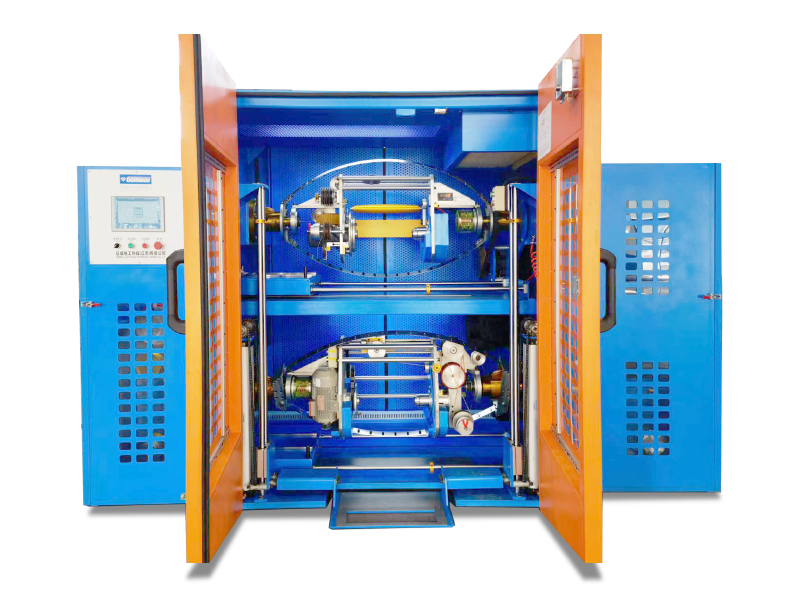
General Maintenance Practices for Industrial Equipment
-
- Keep the machine clean and free from dust and debris.
- Lubricate moving parts as recommended by the manufacturer to prevent wear and tear .
-
- Regularly inspect the machine for signs of wear, damage, or malfunction.
- Check for loose bolts, worn-out parts, and ensure all components are functioning properly .
-
- Store the machine in a dry, ventilated area to prevent moisture damage.
- Avoid operating the machine in hazardous conditions such as strong winds or combustible environments .
-
- Follow a scheduled maintenance plan, including regular checks and component replacements.
- Keep records of maintenance activities for future reference .
-
- Ensure operators are trained on proper operation and maintenance procedures.
- Provide clear instructions and guidelines for safe operation and maintenance .
9. Cleaning Tips of Wire Pair Twisting Machine
| Cleaning Tip | Description |
| Regular Cleaning | Regularly clean the machine to remove dust and debris. Use a soft cloth or brush to clean the surface and internal components . |
| Avoid Harsh Cleaners | Avoid using abrasive cleaners or harsh chemicals that could damage the machine's surface or components . |
| Focus on Critical Areas | Pay special attention to areas prone to buildup, such as the reel, cutting blades, or other moving parts . |
| Use Appropriate Tools | Use soft cloths, brushes, or specialized cleaning solutions as recommended by the manufacturer . |
| Keep Environment Clean | Maintain a clean and dust-free environment around the machine to prevent dust accumulation . |
| Follow Manufacturer Guidelines | Follow the manufacturer's cleaning and maintenance instructions for specific cleaning procedures . |
9. Storage Tips of Wire Pair Twisting Machine
| Storage Tip | Description |
| Keep the Machine Clean | Regularly clean the machine to remove dust and debris. Use a soft cloth or brush to clean the surface and internal components . |
| Avoid Harsh Conditions | Avoid storing the machine in environments with high humidity, extreme temperatures, or corrosive substances . |
| Proper Storage Location | Store the machine in a dry, well-ventilated area to prevent moisture damage and ensure long-term preservation . |
| Secure the Machine | Ensure the machine is stored in a secure location to prevent unauthorized access or accidental damage . |
| Follow Manufacturer Guidelines | Follow the manufacturer's specific storage and maintenance instructions for the machine . |
10. Disadvantages of Wire Pair Twisting Machine
Wire Pair Twisting Machine, as a specialized equipment for manufacturing twisted wire pairs, has several disadvantages that can be inferred from the general characteristics of such machines and the context of similar industrial equipment.
11. Common Faults and Solutions of Wire Pair Twisting Machine
| Common Fault | Description | Solution |
| Insufficient or Excessive Tension | The machine may generate tension during operation. If the tension is not properly set, it can cause the wire to break. | Adjust the tension according to the wire diameter and material. Regularly check and adjust the tension control system . |
| Wire Breakage | The wire may break due to improper tension or mechanical issues. | Check the tension settings and ensure the machine is properly calibrated. |
| Uneven Wire Twisting | The twisted wire may not be uniform in quality. | Adjust the lay length and ensure the machine is properly calibrated. |
| Machine Malfunction | The machine may experience unexpected stoppages or errors. | Check for mechanical issues, lubrication, and ensure all components are functioning properly. |
| Lubrication Issues | Lack of lubrication can lead to wear and tear. | Regularly lubricate moving parts as per the manufacturer's guidelines. |
12. Buying Tips of Wire Pair Twisting Machine
When purchasing a Wire Pair Twisting Machine, consider the following tips to ensure you select the right equipment for your needs:
By carefully considering these factors, you can make an informed decision when purchasing a Wire Pair Twisting Machine.
13. Environmental and Safety Considerations of Wire Pair Twisting Machine
Environmental and Safety Considerations of a Wire Pair Twisting Machine can be addressed as follows:
Environmental Considerations
- Energy Consumption: The operation of industrial machinery like a Wire Pair Twisting Machine can contribute to energy consumption. However, modern machines are designed to optimize energy efficiency, reducing the overall environmental impact .
- Waste Management: Proper disposal and recycling of materials used in the manufacturing and operation of the machine can help minimize environmental impact. Adherence to environmental regulations and standards is essential .
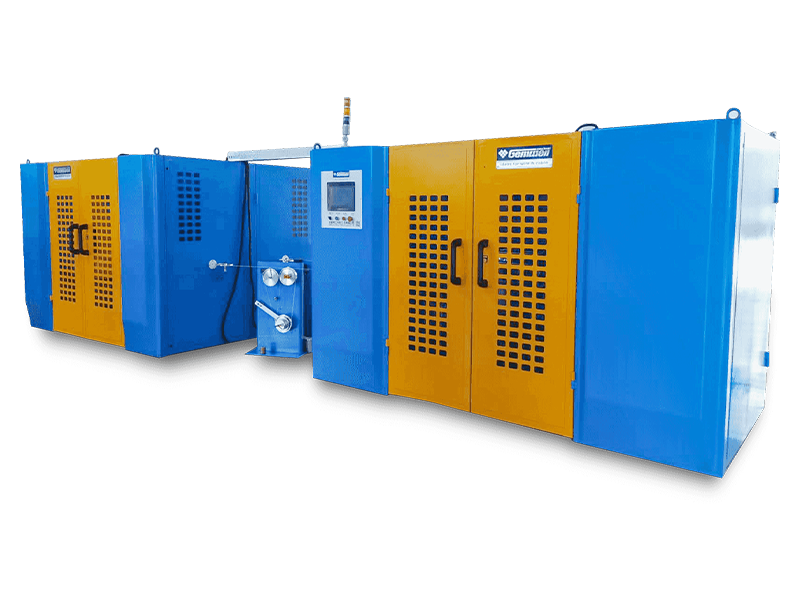
Safety Considerations
- Mechanical Hazards: Rotating parts, such as spindles and flyers, can pose mechanical hazards. Proper guarding and safety protocols are necessary to prevent injuries .
- Electrical Safety: Ensuring that the machine is properly grounded and that electrical systems are maintained can prevent electrical hazards .
- Operator Training: Proper training for operators is essential to ensure safe operation and to minimize the risk of accidents .
- Emergency Protocols: Implementing emergency stop mechanisms and clear emergency procedures can help in managing unexpected situations .
Compliance and Standards
- Regulatory Compliance: Adherence to international and local safety and environmental standards, such as those outlined in ISO standards, is crucial for ensuring the safe and environmentally responsible operation of the machine .
- CE Conformity: Machines should comply with relevant directives, such as those related to mechanical and electrical safety and electromagnetic compatibility .
In summary, the environmental and safety considerations for a Wire Pair Twisting Machine involve energy efficiency, waste management, mechanical and electrical safety, operator training, and compliance with regulatory standards.
14. Applications and Industries of Wire Pair Twisting Machine
| Application | Industry | Description |
| Wire Twisting | Wire and Cable Industry | Used to twist multiple wires, such as copper and aluminum, into conductors for various wire and cable products . |
| Cable Manufacturing | Telecommunications | Used in the production of LAN cables, such as CAT-5, CAT-5E, and CAT-6, for networking applications . |
| Textile Industry | Textile Manufacturing | Used in the production of yarn and textiles, where wires or fibers are twisted to form stronger and more durable materials . |
| Automotive Industry | Automotive Manufacturing | Used in the production of automotive wiring and components, such as wiring harnesses and electrical systems . |
| Industrial Applications | Industrial Manufacturing | Used in various industrial applications, including machinery, robotics, and automation systems . |
15. Future Trends and Developments of Wire Pair Twisting Machine
The future trends and developments of Wire Pair Twisting Machines are likely to be shaped by advancements in automation, digitalization, and sustainability. Based on the provided evidence, several key trends can be inferred:
In summary, the future of Wire Pair Twisting Machines will likely involve increased automation, digitalization, and a focus on sustainability and efficiency, driven by advancements in technology and evolving industry needs.
 E-mail: info@gem-cablesolution.com
E-mail: info@gem-cablesolution.com Address: No.8 Yuefeng Rd, High Tech Zone, Dongtai, Jiangsu, China | No.109 Qilin East Rd, Daning, Humen, Dongguan, Guangdong, China.
Address: No.8 Yuefeng Rd, High Tech Zone, Dongtai, Jiangsu, China | No.109 Qilin East Rd, Daning, Humen, Dongguan, Guangdong, China. English
English  English
English русский
русский 日本語
日本語 Español
Español عربى
عربى 中文简体
中文简体


 Related Products
Related Products